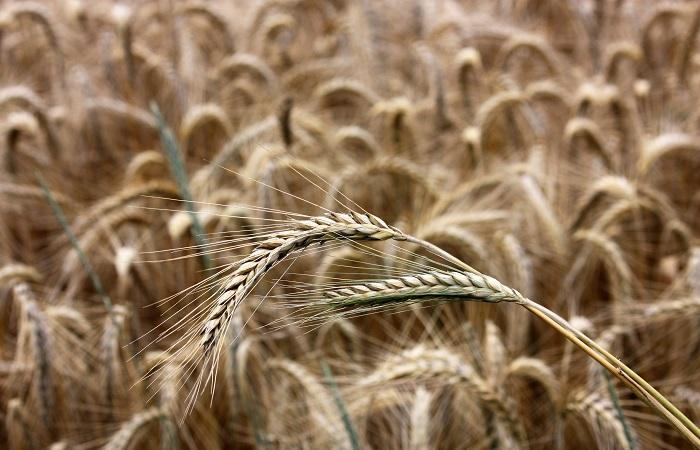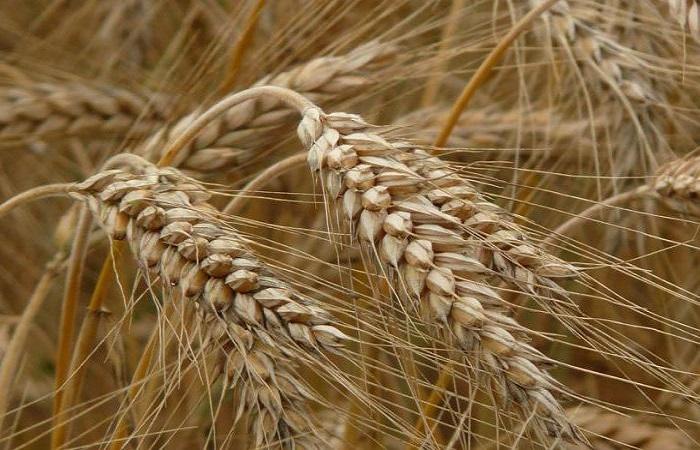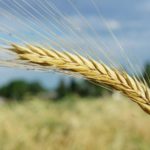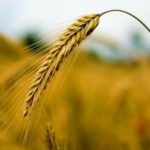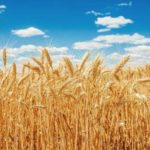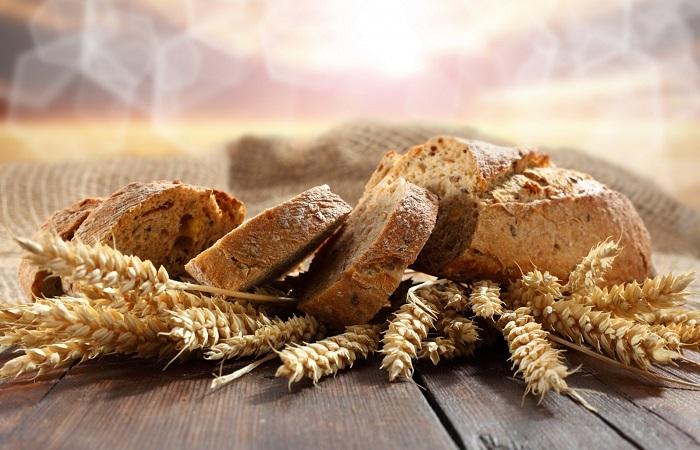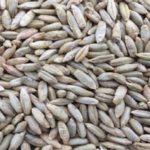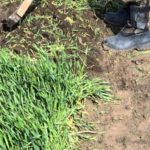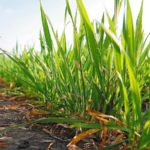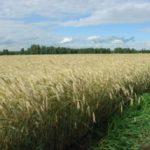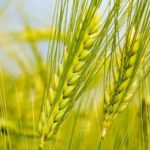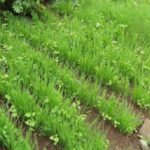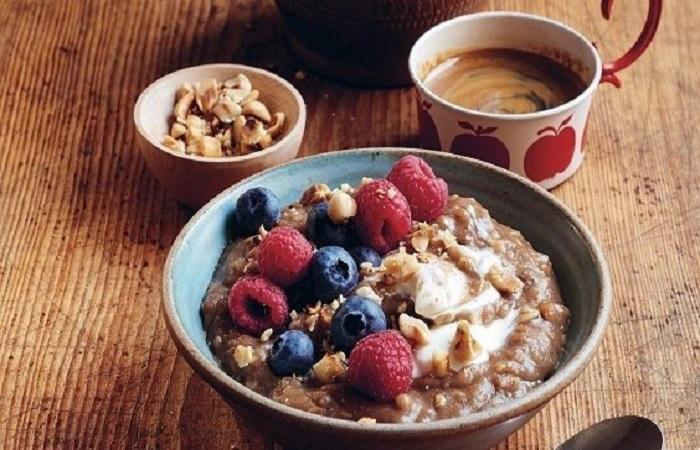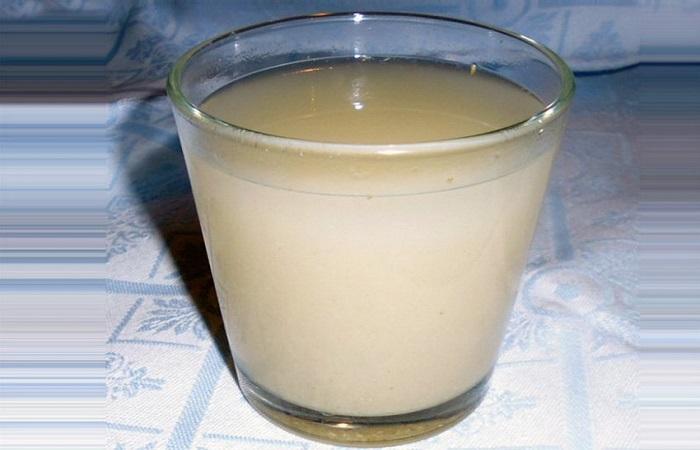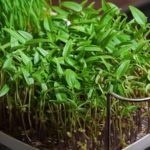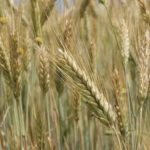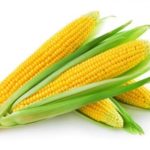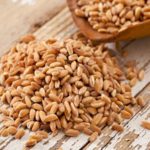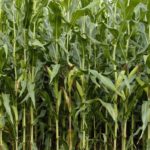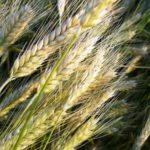Growing rye is one of the areas of agricultural enterprises that are engaged in the cultivation of cereals. Let's look at what the rye plant is, a description of its appearance, its origin, and where the crop is grown. What is its chemical composition, medicinal properties, how to grow the crop using technology. How to use rye grain in folk medicine and cooking, contraindications for use.
What is rye and its appearance
This is an annual or perennial cereal plant.The root system of common rye is powerful, fibrous, long, and extends into the soil up to 2 m deep. The stem is hollow, straight, with 5-6 or 3 or 7 internodes. The stem is smooth, covered with hairs near the ear. The rye plant grows up to 80-100 cm.
Rye leaves are up to 2.5 cm wide and up to 30 cm long. The color of the plant is bluish. The leaf surface is generally smooth, but covered with sparse villi. The inflorescence of the crop is an elongated spike placed on a strong axis up to 15 cm long. The structure of the inflorescence is complex - it consists of 2-flowered spikelets located on a tetrahedral rod. The outer flower scales have straight, rough awns 2-5 cm long.
The fruits of the cereal are oval or elongated grains with a longitudinal groove. The length of the fruit is 5-10 mm, thickness and width – up to 3.5 mm. The color of the grains varies - white, gray, yellow, greenish, brown. The weight of a thousand seeds is 50-55 g.
Rye germinates quickly and begins to grow green mass. The plant forms dense stems 18-20 days after germination, spikes after 40-50 days, and begins flowering after another 7-12 days. Flowers are pollinated by the wind. After 2 weeks, the grains reach the stage of milky ripeness, which lasts 10 days. The grains ripen 2 months after the heading stage.
Origin
Presumably, seed rye comes from a wild cereal growing in southern Europe, central and southwestern Asia. There are versions that the plant’s homeland is Russia and its southern regions.
Today it is generally accepted that the culture originates from Anatolia, located in Turkey. At first it was a weed plant found in fields, but gradually acquired importance as a food crop and began to be cultivated due to its undemanding nature and cold resistance.Annual rye is popular in cultivation, although it comes from a perennial species.
Where does it grow
Most of all the crop is grown in Germany, Poland, Russia, China, Belarus, Scandinavian countries, and Ukraine. In the first three leading countries, 60-68% of the total grain harvest is harvested. In Russia, rye is cultivated in forested areas.
Chemical composition
100 g of rye grain contains 10.3 g of protein, 1.6 g of fat, 60.8 g of carbohydrates, 15.1 g of fiber. The calorie content of the product is 338 kcal. The grain contains vitamins B1, B2, B4, B5, B6 and B9, and a whole set of microelements: potassium, calcium, magnesium, phosphorus, iron, manganese, copper, selenium, zinc.
Medicinal properties
For medicinal purposes, grains, green shoots and bran are used. The grain protein contains lysine and threonine, substances that affect tissue growth and restore them, participating in the synthesis of hormonal substances and antibodies.
Rye helps the body resist diseases, is beneficial for diabetes mellitus as a dietary component, and has an expectorant effect. Rye bread works as a mild laxative, while bran, on the contrary, acts as a binder. Kvass from crumbs regulates digestion, improves metabolism, and has a positive effect on the heart and blood vessels.
Growing technology
In Russia, spring and winter varieties are grown. Spring varieties are cultivated in the northern regions of Central Siberia, Transbaikalia and Yakutia, where winter varieties freeze due to low temperatures in winter.From the harvest of some varieties, insurance reserves are formed for sowing in the European part of the country in the event of winter crops freezing.
Due to the higher yield of winter rye compared to spring rye, it has become a more cultivated variety. The cultivation technology is in many ways similar to the cultivation of winter wheat.
To increase productivity, the crop is sown in clean fallow, with good moisture – in areas sown with green manure. Rye itself clears the soil of weeds and is considered a good precursor for cereals and vegetables. When placing fallows, fall plowing is carried out, whereas after the predecessors, shallow tillage is sufficient.
The type of crop nutrition involves the application of both organic and mineral fertilizers in equal measure. For crops, organic manure and peat manure mixtures are applied at a rate of 30-40 tons per hectare on sod-podzolic soils with good moisture. For chernozems and arid regions, the organic norm is 15-20 tons per hectare. Mineral, nitrogen, phosphorus and potassium fertilizers are used, the application rate depends on the expected yield, but the maximum rate is 60 kg per hectare.
Seeds are sown with the following characteristics: purity - 99%, thousand seed weight - at least 35 g, germination - 95%. Before sowing, the grain is treated to prevent the development of major fungal diseases.Rye is sown at least 50 days before the expected arrival of cold weather, when the air temperature drops below 5 °C.
Winter rye is sown using traditional row, narrow-row and cross-row methods. The seeding rate is set based on the production per square meter. m area of 5-6 hundred productive stems. In different regions, this amount will produce 3-6 million seeds per hectare.
Due to the sensitivity of the crop to sowing depth, this parameter must be adhered to. On moist soil, the seeds are buried no more than 5 cm; in dry soil, they need to be deepened another 1-2 cm.
After sowing, rolling and harrowing are done, and treatment with herbicides to control germinating weeds. Rolling compacts the soil and levels the surface, enhancing the germination of grains. Treatment is carried out against root rot, snow mold, powdery mildew and some other diseases.
Ripe rye is harvested in 1 or 2 phases. In the first case, the plants are removed immediately from the field using combines; when the grain reaches full ripeness, its moisture content will not exceed 20%. Two-phase harvesting begins when the rye reaches waxy ripeness and its moisture content is 35-40%. It is mowed with reapers and placed in windrows when the grain and stems dry out, which will happen in a few days. Plants are selected and threshed. All stages of harvesting must be carried out in a short time so that the grain does not begin to fall off the ears.
Application of rye
Rye grain is used as a food product for people and animals. The animals are also fed green crops. Grain and products made from it have not only nutritional, but also medicinal value. Rye is an excellent green manure, a precursor for any crop.Plants clear the soil of weeds, strengthen and accumulate nutrients.
ethnoscience
Eating rye tones and improves mood. Products made from it normalize metabolism and have a general strengthening effect. To regulate intestinal activity, it is useful to eat bread for constipation, and for disorders, a decoction of bran. The decoction has other properties - a cough softener and an expectorant.
External use of rye bread is also beneficial. It is soaked in milk and applied to the abscesses. Dough compresses are applied to the back for radiculitis to relieve pain.
Bran and greens will be useful for thyroid dysfunction and diabetes, atherosclerosis, anemia, tuberculosis, hypertension, as a means to improve heart function.
Cooking
From ripe seeds of the plant, various products are produced: flour, bread is baked from it, kvass is made, cereals and starch are obtained from grain, and ethyl alcohol.
Sprouted grains are useful for increasing performance, endurance, and activity. They are taken for diseases of the gallbladder, to strengthen teeth, improve the condition of hair and skin, restore vision, and lower cholesterol levels. Thanks to vitamins, which are more abundant in sprouts than in flour or cereals, sprouted grains are beneficial for the functioning of the circulatory and nervous systems, normalize metabolism, and strengthen the immune system.
Contraindications
Due to the acidity of the product, rye bread should not be consumed if you have an ulcer, especially during exacerbations, or with chronic hyperacid gastritis. You cannot eat foods if you are intolerant to the substances in the composition; prepared from low-quality raw materials.
Rye is a traditional crop in Rus' and has not lost its popularity today, despite the fact that it is inferior to wheat in terms of cultivation area.It makes tasty and healthy bread; Porridges and bran decoctions have healing properties. Rye is used in agriculture and as a good fodder crop.

